Plants that can be grown in containers that offer some resistance to slugs and snails attacks will be discussed in this article. What will be shown is that there is a wide range of plants that can be grown in containers to solve this problem.
In a previous post, I touched upon what slugs and snails damage they can do in container gardening. In that post recommendations to what can be done to minimize damage caused by these pests, such as slug pellets, beer traps, and copper tapes, was highlighted.
THE PROBLEM WITH SLUGS
The problem is that slugs and snails attack a wide range of plants, causing severe damage to them in the process. The young leaves and stems are just too tempting for the slugs and snails but they are not too keen on woody plants or those whose leaves are aromatic.
Some plants are never attacked by slugs, such as cosmos or lavender, whilst others are only consumed when the plant is young and tender, but become resistant when the plant matures. Thus during the tender stage young plants are vulnerable, so it is best to protect them by using the aforementioned slug pellets, copper collars, or a mulch of grit or aggregates.
What follows is a selection of plants that offer resistance to slug or snail attack, even when the shoots are young and tender.
ACONITUM CARMICHAELII (Monk’s Hood)

This tall upright perennial (growing up to 1.5m in height) has deeply divided green leaves, from which tall spikes of hooded, lavender-blue flowers appear in autumn. It will require supporting with bamboo canes. Be warned, all parts of the plant are poisonous, so use gloves when handling it. Grow in a multipurpose compost in a large container in full sun.
ALCHEMILLA MOLLIS (Lady’s Mollis)

This is a clump-forming perennial that grows up to 50cm in height. It has rounded, pale green leaves with crinkled edges, and in summer, sprays of small lime green blooms. Does best in a shady area and so is ideal in a North facing areas of a container garden. Grow in a multipurpose compost in a large container in full shade. After flowering trim the spent flowers and leaves.
ALLIUM CRISTOPHII (Star of Persia)

This perennial bulb has short-lived, green sword-like leaves that wither in early summer. From these fading leaves, a large dome of star-shaped violet flowers appear. These flowers dry add extra interest in late summer, where fewer flowers are around.
The bulb grows up to 40cm when planted in a multipurpose compost in full sun. An alternative includes Allium ‘Purple Sensations’.
AQUILEGIA VULGARIS (Columbine)

This upright perennial has tough, divided leaves, where it will grow up to 75cm in height. Tall stems of double pompon-like flowers are produced in late spring to early summer.
It prefers to be grown in an enriched multipurpose compost in full sun. Look out for ‘Nora Barlow’ and ‘Black Barlow’.
ASTILBE ‘Venus’

This perennial has coarse, heavily divide leaves that are impalatable to slugs and snails. In midsummer feathery plumes of pale pink flowers are produced. You can leave the dry flowers as a point of interest in winter.
It needs to be grown in a large pot of moisture retentive, enriched multipurpose compost in full sun, where it will grow up to 1m high.
ASTRANTIA MAJOR (Masterwort)

A clump-forming perennial with divided, mid-green leaves, which grows up to 60cm in height. Masterwort produces sprays of small greenish white, pink, or red flowers from mid-summer to early autumn.
Deadheading is recommended in order to encourage more flowering. Plant in a shady area with a free-flowing multipurpose compost, where water retentive crystals have been added.
BERGENIA PURPURASCENS (Purple Elephant’s Ears)

This evergreen perennial has large fleshy rounded leaves that are clump forming. The leaves have purple flashes in cold weather. In spring dark pink flower clusters emerge from the leaves. Grow in large containers filled with multipurpose compost in full sun or partial shade, where it will grow up to 40cm in height. Alternatives include Bergenia cordyline.
CORYDALIS LUTEA

A small evergreen perennial that has delicate ferny, green-grey leaves. In late spring to early summer, heads of small tubular, yellow flowers appear. This 30cm tall plant does well in a shady area in multipurpose compost. Be warned that it self-seeds freely, but this should not be a problem in containers.
CROCOSMIA x CROCOSMIIFLORA (Montbretia)

This familiar upright perennial has arching, sword-like green leaves. This tall perennial grows up to 70cm and from summer to autumn, trumpet-shaped flowers in shades of yellow, orange and red appear. Grow in a multipurpose compost in full sun, where it will need support to stop it from flopping over. Alternatives include Crocosmia masoniorum.
DIANTHUS (Garden Pink) ‘Dad’s Favourite’

This evergreen perennial has grey-green, grass-like leaves from which scented, semi-double, white blooms, with maroon markings appear. They flower all summer and prefers to be grown in a multipurpose compost in full sun, where it will grow up to 45cm in height. Also, look out for ‘Doris’.
EPIMEDIUM PERRALDERIANUM (Barrenwort)

This semi-evergreen perennial has green heart-shaped foliage on branching stems. This shade-loving plant prefers to be grown in a moist multipurpose compost, where it grows up to 30cm in height. Prune in spring before new leaves and new spikes of yellow flowers appear.
ESCHSCHOLZIA CALIFORNICA (California Poppy)

This quick growing annual has cut grey-green leaves, where it grows up to 30cm tall. In summer large, cup-shaped flowers in shades of yellow, orange and pink appear. Sow seeds directly in a container full of multipurpose compost, where the plants can grow in full sun. It needs to be deadheaded regularly.
EUPHORBIA MYRSINITES (Spurge)

An evergreen perennial that has small pointed, fleshy green-grey leaves on weedy stems. This small perennial only grows up to 8cm tall, where clusters of bright yellow-green flowers in spring. Grow in a well-drained multipurpose compost in full sun. Remove any faded flowers.
FUCHSIA ‘Swingtime’
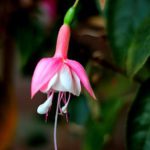
This shrub produces pendant, frilly red-white flowers on oval shaped leaves. Can be planted in a large container full of multipurpose compost in full sun or partial shade, where it will grow to 1m high. Not totally hardy, so bring in greenhouse or conservatory in cold weather.
GALANTHUS NIVALIS (Snowdrops)

This perennial bulb of grassy green leaves grows up to 15cm in height. In late winter, single, nodding white flowers with green spots on the inner petals appear. It will naturalize in a container full of multipurpose compost in partial shade or full sun. It emerges before slugs can do any real damage.
GALIUM ODORATUM (Sweet Woodruff)

This small perennial grows up to 15cm in height, where lance-shaped green leaves are formed in large numbers. From late spring to mid-summer, masses of tiny, white, star-shaped blooms are formed. Plant in moisture retentive multipurpose compost in partial shade.
GERANIUM MACRORRHIZUM (Cranesbill)

This perennial has deeply lobed aromatic leaves from which masses of small magnolia-like flowers appear in early summer. Grow in large containers of free draining multipurpose compost, where it will grow up to 38cm in height. Can be grown in full sun or partial shade.
GERANIUM PHAEUM (Dusky Cranesbill)

An upright perennial with lobed, green leaves that are often clump-forming. This tall perennial grows up to 75cm in height, where stems produces nodding, maroon or white flowers, from late spring to early summer. Looks the best when planted beneath shrubs in a large container where it spreading habits can be controlled. Plant in a container full of free-flowing multipurpose in partial shade.
HELLEBORE HYBRIDUS (Lenten Rose)

This evergreen perennial bring early colour to the container garden where cup-shaped, white, pink or purple flowers are produced in late winter and early spring. Grow in a large container of multipurpose compost in partial shade, where it will grow up to 60cm in height.
HEMEROCALLIS (Daylily) ‘Stella de Oro’

Stella de Oro is such an appropriate name for this daylily, as the name literally translates to ‘Star of gold’. This perennial has narrow, upright, arching, glossy, green leaves, and grows up to 30cm in height.
In mid to late summer, large, yellow trumpet-shaped blooms are produced, which each lasts a day. You can also grow other varieties for different colours, so you will have a larger choice. Prefers a free-flowing multipurpose compost in full sun.
KNAUTIA MACEDONICA (Macedonian Scabious)

This perennial of deeply dissected foliage does well if you want to plant in containers to give a naturalized scheme. In summer wiry stems are produced where crimson, small doomed blooms can be observed. Grow in multipurpose compost in full sun, where it will grow up to 75cm in height. ‘Melton Pastels’ produces a mix of pinks and maroon flowers.
LAVANDULA AUGUSTIFOLIA (English Lavender)

Slugs find the aromatic leaves to be unpalatable, so leave this plant well alone. This shrub has green-grey leaves, where spikes of a small tubular, white or blue scented blooms appear in summer. In order to do its best, it needs to be planted in a large container of sandy multipurpose compost in full sun, where it will be a plant of interest all summer long.
LILIUM HENRYI

This upright perennial bulb provides tall stems of evenly distributed pointed leaves on both sides. On top of these stems a bright orange, Turk–cap flower are produced, with black scattered patternation on them. It flowers in summer where it will grow up to 1m in height, so may require supporting with bamboo canes. Prefers to be grown in ericaceous compost that is free flowering and in the partial shade.
PELARGONIUM MULTIBLOOM SERIES (Geranium)

This familiar perennial, often treated as an annual, has a strong pungent smell that is repulsive to slug and snails. Geraniums have rounded green leaves with red patternation, where white, pink or red flower heads appear through the summer months.
Plant in a free-flowing multipurpose compost in full sun, where it will grow up to 30cm in height. Needs to be watered, deadheaded and fed regularly.
PENSTEMON ‘Evelyn’

This upright perennial has slender, pointed leaves, where spikes of small trumpet-like flowers of white, pink, or red or mauve, are produced from summer to early autumn. Prefers to be grown in a multipurpose compost in full sun, where it will grow up to 45cm in height.
POLEMONIUM CAERULAEUM (Jacob’s Ladder)

This clump-forming perennial looks good in a naturalized container garden in light shade. The perennial bears’ clusters of blue or white bell-shaped flowers in early summer, above the divided, lance-shaped leaves. Can grow up to 60cm in height when planted in a moisture retentive multipurpose compost in partial shade.
PULMONARIA OFFICINALIS (Lungwort)
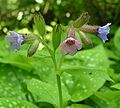
Slugs and snails hate the leaves of this plant, so will leave it alone at all costs. It is a semi-evergreen plant with coarse brightly green leaves from which funnel-shaped pink, blue or white spring blooms can be observed. Can be grown in partial or full shade, where the plant prefers to be grown in a multipurpose compost. Will grow up to 30cm in height.
RUDBECKIA HIRTA
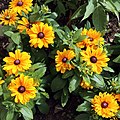
This short-lived perennial is often grown as an annual, has oval shaped leaves. It is a tall perennial, growing up to 90cm in height, where the tall stems bear daisy-like flowers of yellow or red with dark brown centres, are produced throughout the summer months. Grow it in a multipurpose compost in full sun. ‘Becky Mix’ is a firm favourite.
VERBASCUM CHAIXII (Mullein)

This perennial form a rosette of large coarse green leaves. From the upright spikes of pale yellow flowers appear during summer. Grow it in a container of multipurpose compost in full sun, where it will grow up to 90cm in height. ‘Album’ has white flowers with purple centres.
CONCLUSIONS
In this article, various plants that offer slugs and snails resistance in containers have been described. From this list, you can see various plants, covering a wide range of flower colours, forms, and heights. No matter what, there are slug resistant plants for you. Why don’t you buy one today?
If you have any questions that you want answering or have a comment that you wish to make, please leave them in the comment box below.
Good Luck. No more slug hunting required.

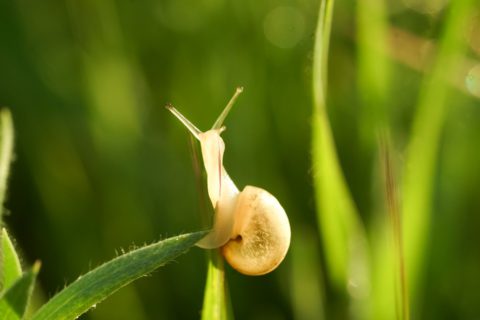
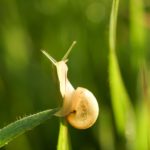
Damn- i thought i would find an article to show me how to protect my containers from slug and snail attack – instead i find a list of plants that are resistant to slug attack.
i have tried copper tape, coffee, sharp gravel nothing seems to work – do you have any ideas on how to reduce slug attacks on my containers?
many thanks in advance
phil
Hi Phil
To be truthful it is very difficult to have total protection against slug attacks. The aim of this article is to highlight plants that will not likely be attacked by slugs, so if you have a high infestation they will survive and be ignored by slugs and snails, which is the ultimate protection. The best way to protect the other plants that are vulnerable to slug and snail attacks is to use beer traps, which you can find informationhere.
Thank you
Antonio
Do you find it easy to grow certain flowers? I love the smell of lavender and your article had a few choices i could consider but being a beginner i wanted to know if there was a certain flower that needs less attention than others, just curious. I love the information about the slugs and snails because you never think about bugs when you are thinking of starting a garden and that fact that they don’t like lavender actually makes me like it even more. Do you know of any insects that isn’t affected by lavender?
Hi Lakia
For a beginner I would recommend trees and shrubs as these take less looking after, I have written two articles on growing trees and shrubs in the sun and the shade, which should help you make a decision. To answer your question lavender does not seem to be attacked by anything, the only problem is the froghopper but the damage is minimal.
Kind Regards
Antonio
This is a very informative article to read. I love gardening. When I will have my own garden I will plant varieties types of trees and plants. Thank for very detailed information about each of the plants which will never be attacked by slugs or snails. I wish to buy one for me if it is available in my country. Thanks for the article. Keep posting your good work.
Hi Fahim
The range of plants is extensive and should cover a wide range of interests for individuals such as yourself. I wish you every success in your garden and wish that the slugs are kept at bay.
Kind Regards
Antonio
Thanks for listing all those plants that are resistant to slugs and snails. The damage done by these creatures is certainly extensive, especially when you spend so much time caring for your plants.Container gardening is a brilliant idea. I have been looking through your list of plants and will choose a few to round out my garden.
Hi Dave
Thank you for your comment and I hope you chose some to brighten your garden What is your favourite, as there are some beauts in this article?
Kind Regards
Antonio
Hi Antonio
There are a great range of plants that you have presented here, I’m trying to minimize the number of chemicals that I use around the garden, I am just wondering if I planted out my containers with the plants that you have recommended would I be slug free? Would I be able to get away with not using any of the techniques that you mentioned in your previous article, slug pellets etc.?
Any advice would be greatly appreciated.
Hi Dominic
Thank you very much for your comment on my article. The truthful answer is that you cannot be certain that the plants will be slug damage free but the plants should suffer less slug damage. The result would be that you do not need as much preventing measures but I would have some ‘just in case’.
Kind Regards
Antonio